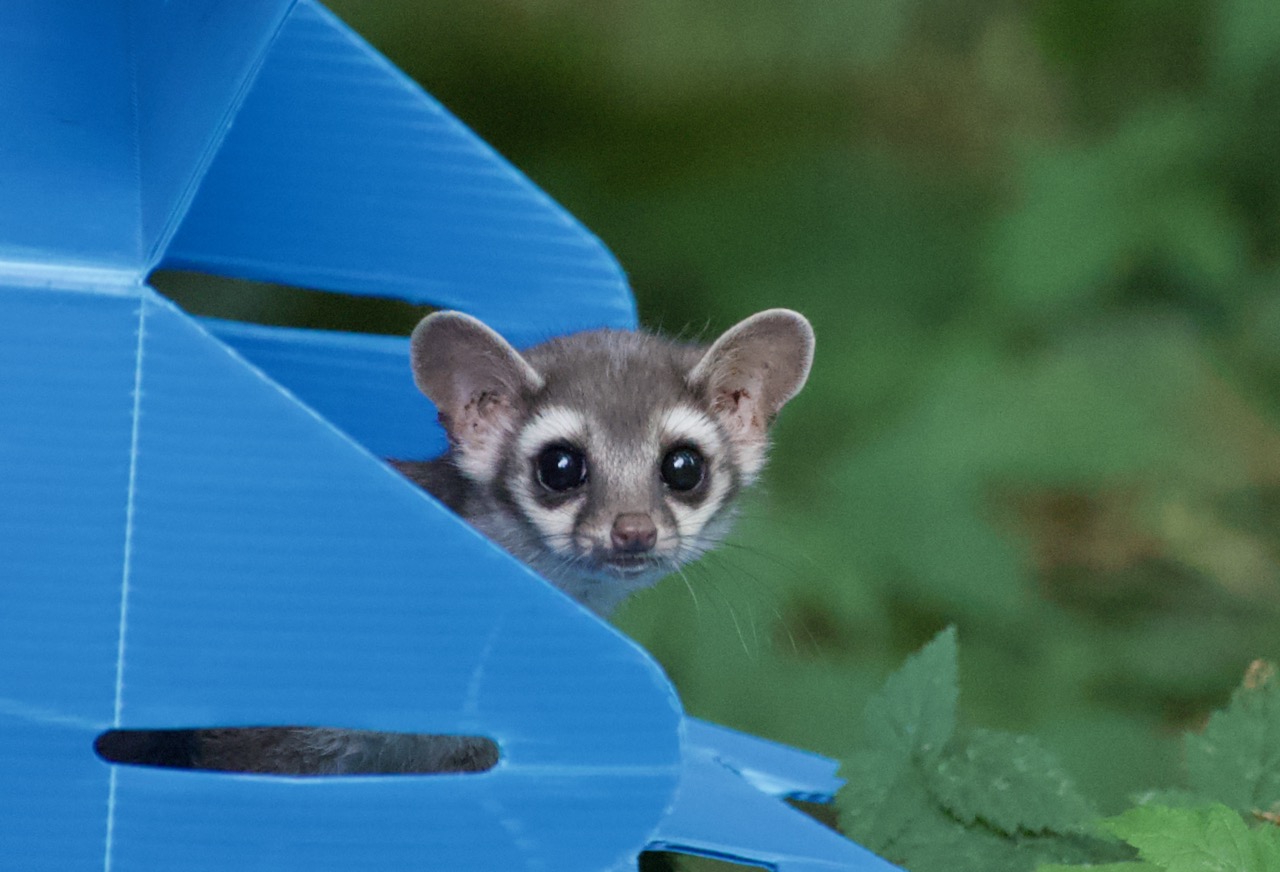
It was the middle of July when Humboldt Wildlife Care Center admitted a very young Ringtail (Bassariscus astutus) who’d fallen through a chimney into someone’s house in Hoopa. You may have read about her needs in care when her story was picked up by local news source, Redheaded Blackbelt.



A Ringtail (other common names include Ring-tailed cat, MIner’s cat and even Civet cat) is not a cat, although they do have many cat-like qualities, from appearance to behaviors. In fact, Ringtails are members of the family Procyonidae, a group that includes coatimundis, kinkajous and the much more familiar Raccoon. Yet the comparisons to other animals are even built into their scientific name – the latin binomial Bassariscus astutus, literally means, sly little fox!
When this sly little raccoon cousin was admitted, her eyes were open and her teeth were just starting to come in. She was still quite young – maybe 8 weeks old. We immediately started her on a milk replacer. At only 140 grams, she would need at least two weeks, maybe three, before she could be weaned to an all solid food diet.




By the end of July, the youngster was on a diet of egg, fruit, vegetables, insects, rodents and birds. In the middle of a hectic baby season most of our mammal housing was already in use by the usual suspects (raccoons, skunks, opossums), besides her needs for outdoor housing were far more arboreal than any of the mammals we routinely treat. So we built a small but usable housing, dubbed Ringtail Tower. WIth a lot of vertical space, she was able to develop her climbing skills while chasing crickets as she learned to hunt.

After several more weeks, and a lot of crickets, rats, mice, eggs, blueberries and more, she was getting to be a good size, with good skills, for us to start planning her release.
Although she was born in Hoopa, she’d spent a large portion of her infancy and her first several weeks of being a juvenile in care in our facility on the edge of Humboldt Bay. The record-shattering heat that gripped most of California, including her home valley on the Trinity River, never touched us here in Humboldt. Although she was ready to be released, we decided to wait for the heatwave to break before taking her home.
At last, the second weekend of September, the temperature in Hoopa was down to reasonable 90 degrees with even cooler temperatures forecast for the coming week. We took the opportunity to release her during this window. With several days of normal heat, she’d be better acclimated if the thermometer started climbing into the danger zone again.







Caring for this young Redtail was an honor. To be able to provide care for all our patients is an honor. It’s a privilege to be this near to wildness everyday of our lives and we don’t take this privilege lightly. That our work is so rewarding is something for which I believe we are each grateful everyday. But our work is not only a privilege, it’s also necessary. This Ringtail needed us. All of our patients do. This necessity, and the sorrow of this necessity, is also with us daily. And this necessity is what makes our position so precarious. The only thing that can stabilize our future, and ensure that we are here, every day of every year to help wildlife in need, is your support. Please donate. Our patients need us, and we need you. Thank you. click to donate

all photos: Laura Corsiglia/bird ally x.

